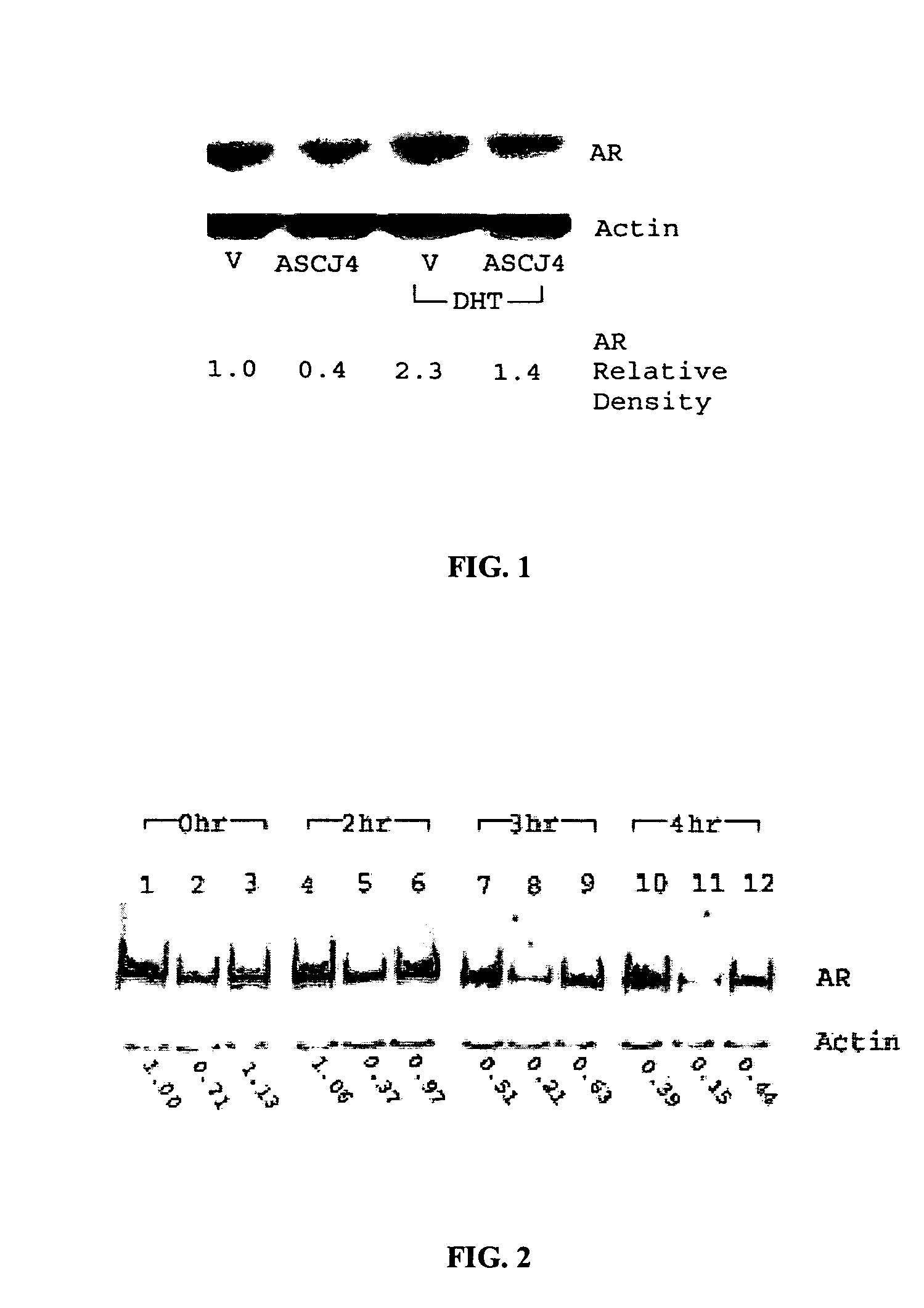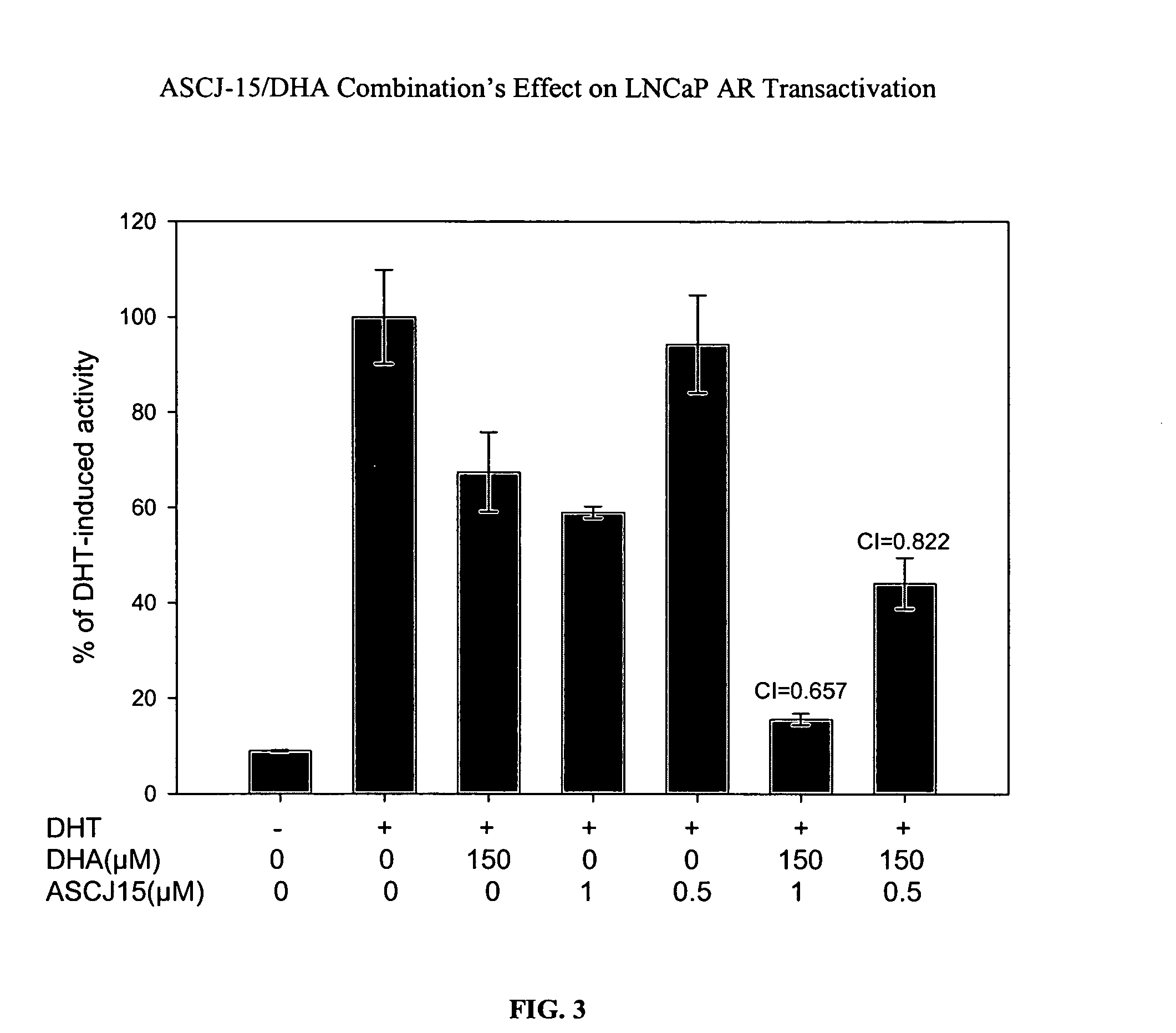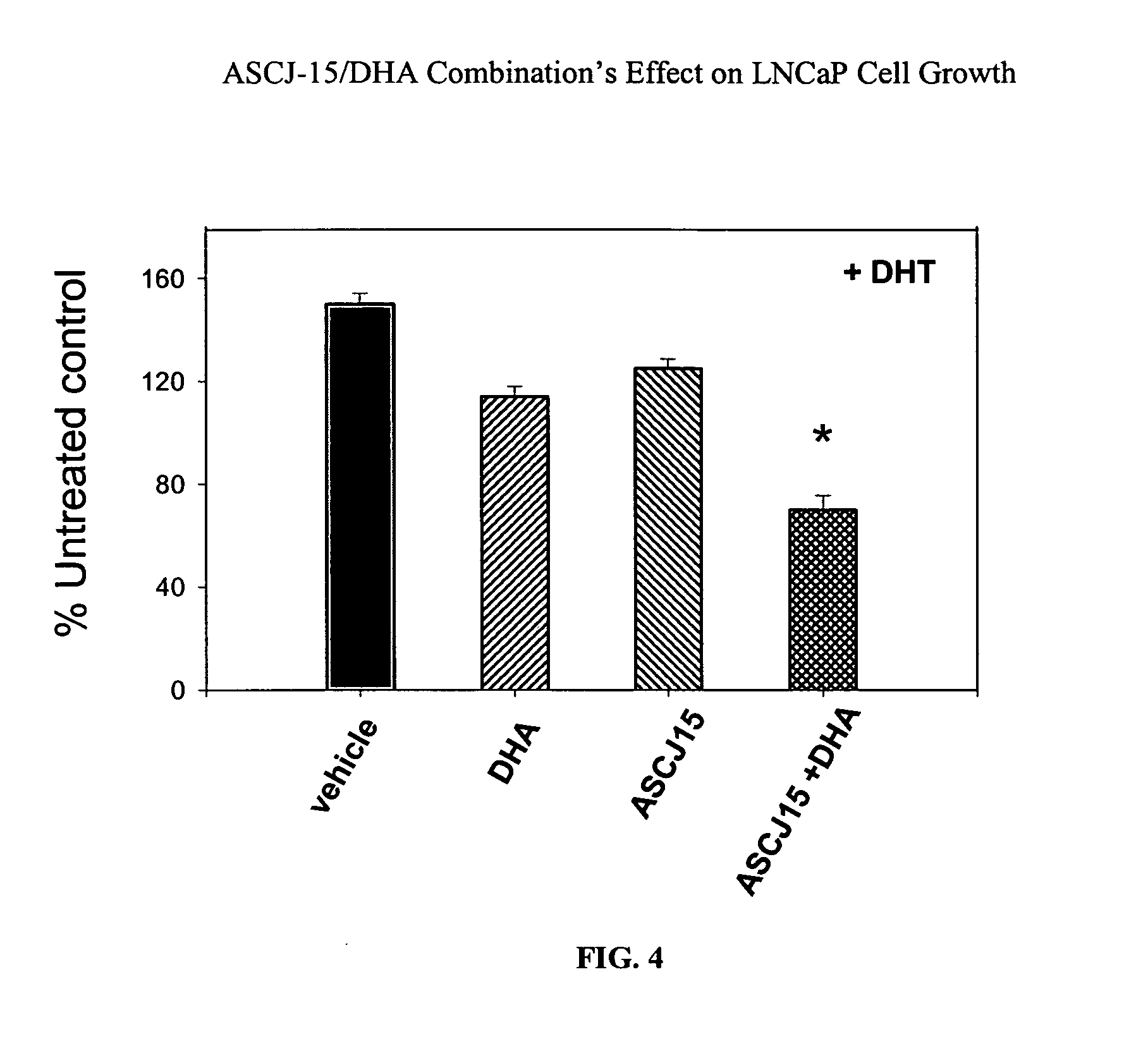Enhancement of anti-androgenic activity by a combination of inhibitors targeting different steps of a steroid-dependent gene activation pathway and uses thereof
- Summary
- Abstract
- Description
- Claims
- Application Information
AI Technical Summary
Benefits of technology
Problems solved by technology
Method used
Image
Examples
example 1
Detecting Changes in Steroid-induced Gene Activation using an Androgen Receptor Transactivation Assay, an MTT Cell Proliferation Assay and Western Blot Analysys
[0077] The provided examples provide a representative study of the effects of administering of a combination of compounds, at least two of which are capable of affecting at different steps along a steroid-dependent gene activation pathway. The provide examples include an androgen receptor (AR) transactivation assay to study the effect that the various combinations of compounds have on the activity of a wild-type or a mutant androgen receptor found in prostate cancer and an MTT cell proliferation assay to test the ability of the combination of compounds to suppress prostate tumor cell growth. Preferred assays utilize human prostate carcinoma cells, LNCaP cells, which are accepted by those skilled in the art as expressing a clinically relevant mutant androgen receptor (AR) that is responsive to androgen. In the provided exampl...
example 2
Inducing Degradation of the Androgen Receptor by Administration of a Curcumin Derivative
[0085] Western blot analysis of LNCaP cell lysates was used to depict the reduced presence of the androgen receptor (AR) when LNCaP cells were cultured in the presence of a curcumin derivative, termed an ASCJ compound. A decrease in the presence of the androgen receptor (AR) was found when the ASCJ compound was cultured alone in LNCaP cells, when ASCJ was cocultured with androgen DHT and when ASCJ was cocultured with cyclohexamide, a protein synthesis inhibitor.
[0086] Specifically, LNCaP cells were cultivated in 10% CD / RPMI and were treated with ASCJ-15 (1 μM), a curcumin derivative, or a control vehicle in the presence or absence of DHT (2 nM) for 24 hours. Androgen receptor (AR) protein expression from each cell sample was analyzed by western blot as described in Example 1. The experiment was performed four times to ensure data reproducibility. Representative data from one experiment are show...
example 3
Inhibiting Steroid-induced Gene Activation by Administering a Compound Capable of Degrading a Steroid Receptor Alone or in Combination with a Compound Capable of Blocking Binding Between the Steroid Receptor and Corresponding Steroid Response Element (SRE)
[0088] The effect of a compound capable of degrading an androgen receptor (AR) was administered alone and in combination with a compound capable of blocking or interfering with binding between an androgen receptor and an androgen response element (ARE). The curcumin derivative, ASCJ, was shown in Example 2 as a compound capable of inducing degradation of the androgen receptor (AR). Compound ASCJ-15 was provided alone and in combination with docosahexaenoic acid (DHA), an omega-3 fatty acid capable of blocking or interfering with binding between the androgen receptor (AR) and the androgen response element (ARE). The effect of DHA on androgen-mediated gene activation has previously been studied. Chung et. al., Effects of docosahexae...
PUM
| Property | Measurement | Unit |
|---|---|---|
| Composition | aaaaa | aaaaa |
| Degradation properties | aaaaa | aaaaa |
Abstract
Description
Claims
Application Information
 Login to View More
Login to View More - R&D
- Intellectual Property
- Life Sciences
- Materials
- Tech Scout
- Unparalleled Data Quality
- Higher Quality Content
- 60% Fewer Hallucinations
Browse by: Latest US Patents, China's latest patents, Technical Efficacy Thesaurus, Application Domain, Technology Topic, Popular Technical Reports.
© 2025 PatSnap. All rights reserved.Legal|Privacy policy|Modern Slavery Act Transparency Statement|Sitemap|About US| Contact US: help@patsnap.com



